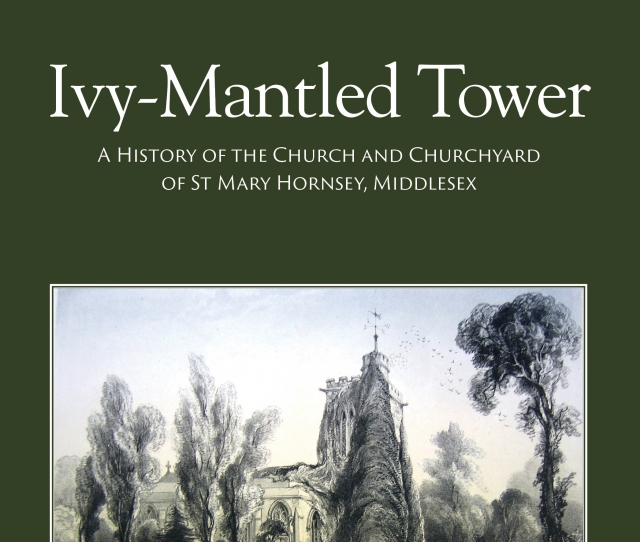Ivy-Mantled Tower. A History of the Church and Churchyard of St Mary Hornsey
Review

Ivy-Mantled Tower. A History of the Church and Churchyard of St Mary Hornsey, Middlesex, Bridget Cherry, Hornsey Historical Society, 2015, hardback, 133 pp., £19.50, ISBN 9780905794532
The Hornsey Historical Society are to be congratulated on their production of this beautifully illustrated, informative history of a parish church whose derelict tower and neglected churchyard first aroused the practical concern of the author, an architectural historian, prompting her with the help of other members of the Hornsey Historical Society to research and write its history from the Middle Ages to the present day. Appropriately following verses from Gray’s Elegy Written in a Country Churchyard she presents a fine selection of views and descriptions by a succession of contemporary artists and observers in her introduction. She then offers a carefully structured, century-by-century account, focusing explicitly upon the history of the church and churchyard rather than the parish it served over a period of half a millennium, including the demolition of the Victorian church in 1969, the abandonment of plans to rebuild it in the decade which followed and the reluctant amalgamation of the congregation with that of the modern church of St George Cranley Gardens, constructed in 1959, a mile to the west in 1982. Within this microcosm it identifies ‘changing issues and priorities’ as the small village community became absorbed mainly in the nineteenth century into suburban London and faced the problems of costly estimates for the maintenance of the Victorian building and a declining congregation in the twentieth century. Composite photographs illustrate a variety of community activities on the site involving a wide age spectrum up to the present day and the work of the friends of Hornsey Church Tower is fully documented since its foundation in 1989. There are also appended surveys of churchyard ecology, mainly identifying trees and plants, a plan of the locations of monuments and other features mentioned in the text and a brief overview of the principal archival sources consulted including inventories and wills; baptismal, marriage and burial registers, vestry minutes though these are patchy for the period before 1800 and the records of the Incorporated Church Building Society relating to building projects in 1833 and 1888.

